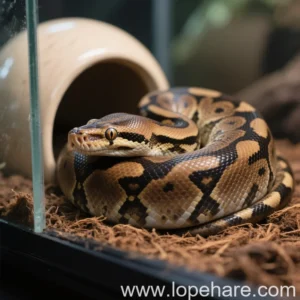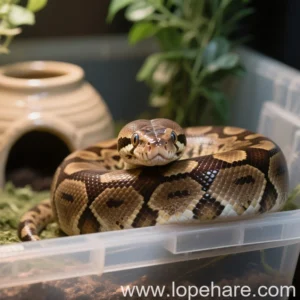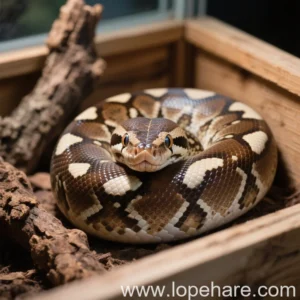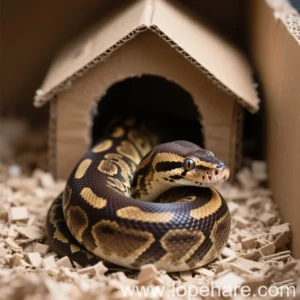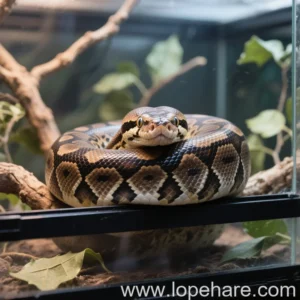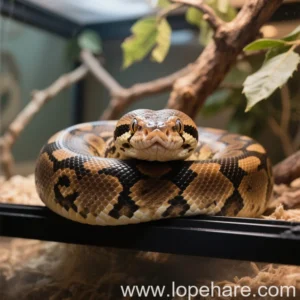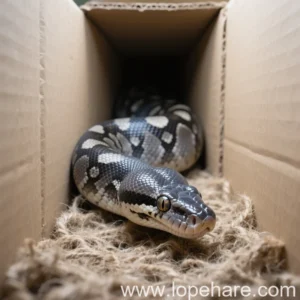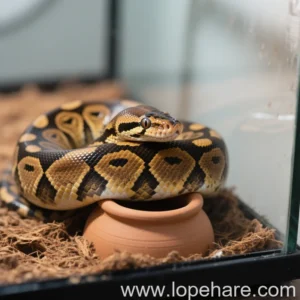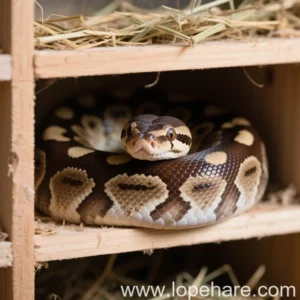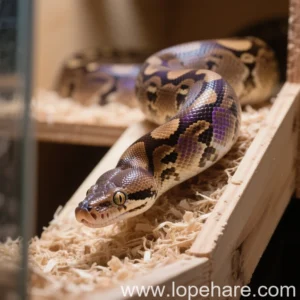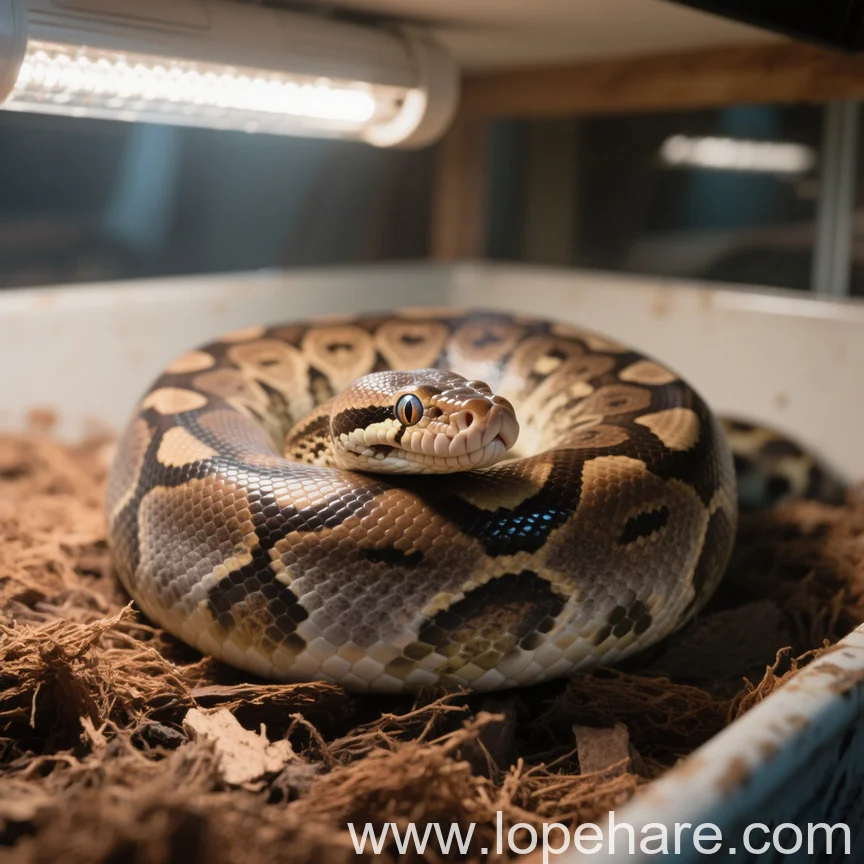
Reptile Husbandry
The Ultimate Guide to Ball Python Enclosure Setup for Beginners
Welcome to lopehare.com, your resource for expert information on small and exotic pets! Here, we aim to provide comprehensive guides to help you give your unique companions the best possible care. If you’re considering bringing a ball python (Python regius) into your home, you’re on the right track by starting with enclosure setup. Unlike cats or dogs, reptiles have highly specific environmental needs that must be met precisely to ensure their health and well-being. Getting the habitat right from day one is the most critical step.
Why Proper Setup Matters
Ball pythons, native to West and Central Africa, thrive in specific conditions. Replicating their natural environment as closely as possible prevents common health problems like respiratory infections, shedding issues, and stress. A poorly set up enclosure is the leading cause of health problems and premature death in captive ball pythons. Investing time and effort into creating the correct habitat is an investment in your snake’s long, healthy life.
Enclosure Type and Size
For ball pythons, which are relatively shy and prefer secure spaces, the enclosure needs to provide safety and sufficient room for movement and thermoregulation. The two most common types are:
- Glass Terrariums: Widely available, offer good visibility, but can be challenging to maintain humidity. Tops usually need to be partially covered.
- PVC or Plastic Enclosures: Excellent at retaining heat and humidity, offer more security, and are often preferred by experienced keepers.
Regardless of type, ensure the enclosure is escape-proof with a secure lid or door.
Size recommendations:
- Juvenile (under 2-3 ft): A 20-gallon long tank (approx. 30″L x 12″W x 12″H) is a good starting point. Ensure it’s not too large, as excessive space can stress young snakes if not filled with sufficient hides and clutter.
- Adult (3-5 ft): A minimum of a 40-gallon breeder tank (approx. 36″L x 18″W x 18″H) is needed. Many keepers prefer larger, such as 4x2x2 foot (120-gallon equivalent) enclosures, to allow more room for enrichment and thermoregulation. The length of the enclosure should ideally be at least as long as your snake.
Creating the Right Heat Gradient
Ball pythons are ectothermic (cold-blooded) and rely on external heat sources to regulate their body temperature. They need a heat gradient, meaning one end of the enclosure is warmer than the other, allowing the snake to move between zones to regulate its temperature.
- Basking (Warm) Side: 88-92°F (31-33°C)
- Cool Side: 75-80°F (24-27°C)
- Ambient (Overall) Temperature: 78-80°F (26-27°C)
Common heating methods include:
- Under Tank Heaters (UTH): Best for creating belly heat, often necessary for digestion. Must be controlled by a thermostat to prevent burns. Place under the warm side.
- Ceramic Heat Emitters (CHE): Emit heat but no light, great for ambient heat or boosting nighttime temperatures. Also require thermostat control. Place over the warm side, outside the enclosure or with a protective guard.
- Deep Heat Projectors (DHP): A newer option that emits infrared heat, penetrating tissue similar to natural sunlight without light. Requires thermostat control.
Always Use a Thermostat! Heating elements without a thermostat are extremely dangerous and can cause severe burns or even death. A simple on/off thermostat is the minimum; proportional thermostats offer more precise control.

Lighting Requirements
Unlike many reptiles, ball pythons are nocturnal and do not strictly *require* UVB lighting if their diet is properly supplemented with calcium and D3. However, providing a low-level UVB bulb (e.g., 5-6% Arcadia ShadeDweller or similar) can be beneficial for overall health and natural behavior, mimicking crepuscular exposure and aiding vitamin D synthesis. If using UVB, ensure it’s on a 12/12 hour day/night cycle and is positioned correctly so the snake cannot get too close.
Regardless of UVB, a simple light source on a timer (12/12 cycle) helps establish a natural photoperiod, which is important for their biological clock. Avoid bright, overhead basking lights that are common for diurnal lizards, as these can stress nocturnal snakes.
Achieving and Maintaining Humidity
Ball pythons need relatively high humidity to shed properly and maintain respiratory health. Their natural habitat experiences humidity levels often between 50-60%, spiking higher during rainy seasons, ideally reaching 70-80% temporarily, especially when shedding.
Maintaining proper humidity is crucial. Here’s how to approach a proper ball python tank setup for humidity control:
- Substrate Choice: Use a substrate that holds moisture well (discussed below).
- Water Dish Size and Placement: A large water dish placed on the warmer side will increase humidity through evaporation.
- Restricting Ventilation: For glass tanks, covering part of the screen top with foil, plastic wrap, or HVAC tape (ensure adequate airflow is still present) helps trap humidity. PVC enclosures naturally hold humidity better.
- Misting: Daily misting can help, but consistent humidity is better achieved through substrate and enclosure type.
- Humidity Box: Providing a hide filled with damp sphagnum moss can offer a humid microclimate, especially important during shedding.
Avoid Constantly Wet Conditions: While high humidity is needed, the enclosure should not be constantly soaking wet, as this can lead to scale rot and respiratory infections. The substrate should be damp but not waterlogged.
Choosing the Right Substrate
The best substrates for ball pythons are those that retain moisture and allow for burrowing, which ball pythons enjoy doing. Avoid sand, pine, and cedar substrates, which are dusty or contain harmful oils.
Good options include:
- Cypress mulch (e.g., Zoo Med ReptiBark)
- Coconut fiber (e.g., Eco Earth, Forest Floor)
- Sphagnum moss (can be mixed with other substrates or used in a humidity box)
- Paper towels (excellent for quarantine, easy to clean, but don’t hold humidity)
A common and effective mix is coconut fiber with some cypress mulch or sphagnum moss mixed in.
Hides and Enrichment
Ball pythons are ambush predators and feel most secure when they have places to hide. You need at least two hides: one on the warm side and one on the cool side. The hides should be snug, allowing the snake to touch the sides and top.
- Half logs (often too open)
- Artificial caves or rock formations
- Commercial reptile hides
- Cork bark
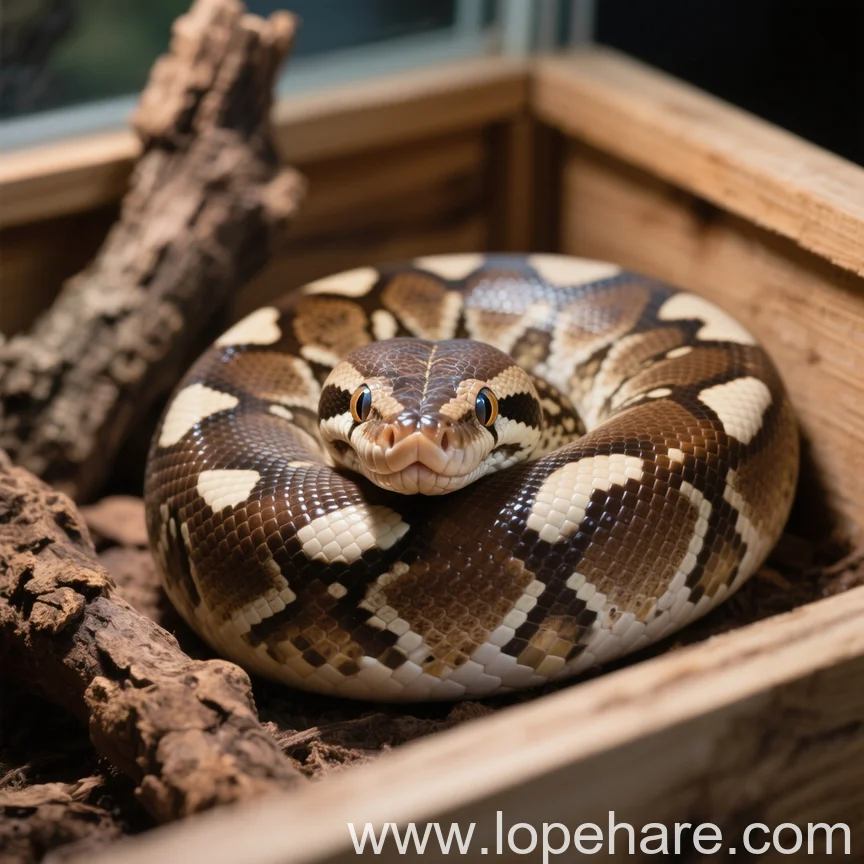
Beyond hides, providing branches, fake plants, and other clutter encourages exploration and provides physical stimulation. This helps create a stimulating environment vital for their well-being.
Water Source
A sturdy, heavy water bowl large enough for the snake to soak in is essential. Place it on the warm side to help with humidity, but monitor and change the water daily to keep it clean. Soaking can help with shedding and hydration.
Monitoring Tools: Thermometers and Hygrometers
You absolutely need reliable tools to monitor the temperature and humidity within the enclosure. Stick-on analog gauges are often inaccurate.
- Digital Thermometers: Use probes to measure temperatures accurately on both the warm and cool sides, including the basking spot surface temperature.
- Digital Hygrometer: Measures humidity levels. Place it in the middle or slightly on the cool side of the enclosure.
Check Temps and Humidity Daily: Get into the habit of checking your gauges every morning to ensure the environment is stable and correct.
Putting It All Together: A Step-by-Step Summary
Here’s a quick checklist for a beginner’s guide to ball python enclosure setup:
- Choose an appropriately sized enclosure (minimum 20-gallon long for juveniles, 40-gallon breeder or larger for adults).
- Select a suitable substrate (e.g., coconut fiber, cypress mulch).
- Install heating element(s) (UTH, CHE, or DHP) on one side.
- Connect heating element(s) to a thermostat.
- Place hides (at least two, one warm, one cool).
- Add a large water dish.
- Add clutter and enrichment (branches, plants).
- Install digital thermometers (warm side, cool side, basking surface) and a digital hygrometer.
- Add lighting (optional UVB or simple light) on a timer.
- Run the setup for at least 24 hours (ideally longer) to ensure temperatures and humidity are stable before introducing your snake.
Conclusion: A Rewarding Pet
Setting up a ball python enclosure correctly requires attention to detail, but once established, maintaining it becomes part of a rewarding routine. By focusing on the right environment – precise temperatures, controlled humidity, secure hides, and enrichment – you provide the foundation for a healthy, happy ball python. At lopehare.com, we believe understanding and meeting these specific needs is key to successful small pet keeping. While the initial setup might seem daunting, it’s manageable with the right knowledge and equipment, making the ball python a wonderful pet for responsible beginners.
References:
